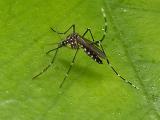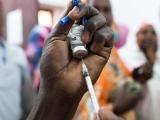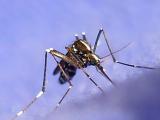The weekly yellow fever update released by Brazil's health ministry yesterday showed another steep rise in the number of confirmed cases, which are now at 353, an increase of 140 cases from the previous week.
Also, health officials reported 17 more deaths, pushing that total to 98 so far, according to a translated report from O Globo, a newspaper based in Rio de Janeiro.
Outbreak builds as Carnival nears
Sao Paulo and Minas Gerais states, in southeastern Brazil, are hardest hit, accounting for 161 and 157 of the confirmed cases, respectively. Cases have also been reported in Rio de Janeiro state and Federal district.
Health officials have still found no evidence that Aedes aegypti mosquitoes are involved in the latest outbreak, which follows the pattern seen with a similar event that began in July of 2017 and resulted in 777 confirmed cases and 261 related deaths. The ministry, however, said state health officials in Sao Paulo are investigating a possible urban case, but it noted that the patient lives in an urban area and possibly works in a rural area.
The spike in cases comes as millions of visitors are expected to visit the country for Carnival celebrations, which take place from Feb 9 to Feb 14.
In the middle of January, Brazil announced the launch of a yellow fever vaccination campaign targeting 19.7 million people in Sao Paulo, Rio de Janeiro, and Bahia states.
Study supports sylvatic transmission
A genome study from samples of people and monkeys infected in Brazil's 2017 outbreak suggests multiple sylvatic transmission cycles, Brazilian and German researchers reported yesterday in an early online edition of Clinical Microbiology and Infection.
The team examined nearly complete yellow fever genomes collected from 14 human case-patients and 2 monkeys from February to April of 2017. They also analyzed the epidemiologic and geospatial data for each case.
All of the yellow fever strains were closely related, with two cocirculating clusters. One was limited to a remote area of Espirito Santo state, while the other was part of a coastal cluster covering several hundred kilometers. Both clusters included strains obtained from humans living in rural areas and from monkeys.
The findings suggest sylvatic transmission (spread from animals), with two distinct clades hinting at multiple sylvatic transmission cycles, the group concluded. The researchers said more surveillance is needed, given the likelihood if continuing reemergence of the virus from monkeys, which could eventually lead to urban transmission cycles.
Vaccination campaign in Nigeria
In Nigeria, meanwhile, which is also experiencing a yellow fever outbreak, plans are under way to launch a vaccination drive targeting 1.2 million people in Borno state, News Agency of Nigeria (NAN) reported yesterday, citing Terna Nomhwange, the World Health Organization (WHO) country representative in Nigeria.
He said the risk of regional spread from the outbreak in Nigeria is moderate and that vaccination in Borno state will target camps of internally displaced people (IDP), because of the heightened risk of mosquitoes transmitting the disease in IDP camp settings.
According to the latest update from the WHO's Regional Office for Africa, Nigeria has reported 367 suspected yellow fever cases from 16 states since September, 33 of them confirmed. The total includes 45 deaths.
See also:
Feb 8 O Globo story
Feb 1 CIDRAP News scan "More yellow fever cases, deaths reported in Brazil"
Feb 7 Clin Microbiol Infect abstract
Feb 7 NAN story
Feb 5 WHO Regional Office for Africa report





















